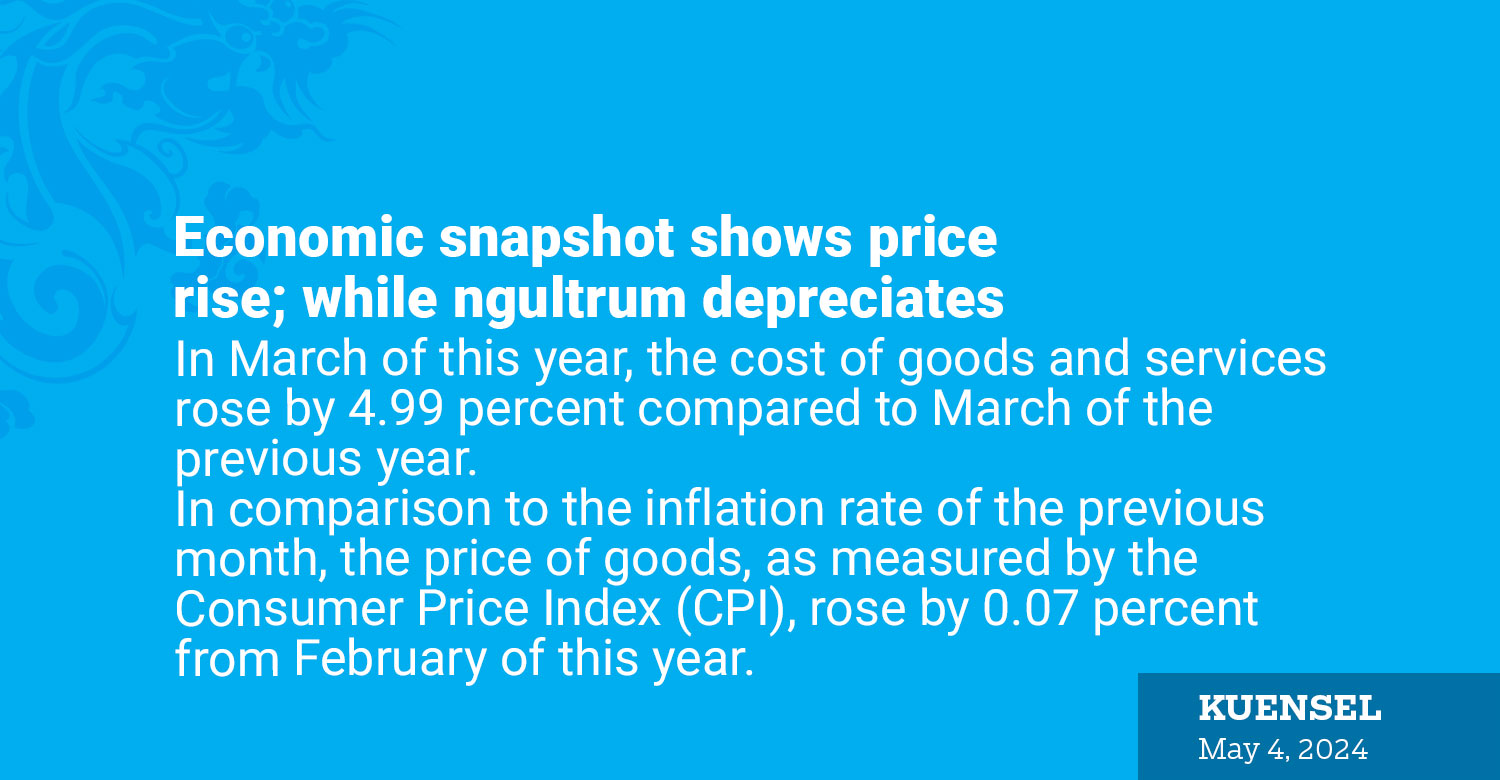Sherab Lhamo
In March of this year, the cost of goods and services rose by 4.99 percent compared to March of the previous year.
In comparison to the inflation rate of the previous month, the price of goods, as measured by the Consumer Price Index (CPI), rose by 0.07 percent from February of this year.
As of March 2024, the value of the ngultrum has been depreciating, with Nu 100 now worth only Nu 56.4 compared to December 2012. This indicates a decrease in purchasing power, with a drop of 4.75 percent over the past year (from March 2023 to March 2024) due to price increases in the economy.
In March, food prices surged by 6.95 percent, while the non-food index rose by 3.34 percent compared to the same period last year.
Food and non-alcoholic beverages saw a significant increase of 7.20 percent, while alcoholic beverages and betel nuts rose by 3.70 percent.
The sectors experiencing the highest increases were housing and utilities, with a surge of 8.93 percent, followed closely by health, which increased by 8.02 percent.
Clothing and footwear registered an uptick of 5.75 percent, while furnishings and household equipment rose by 3.93 percent. Meanwhile, restaurant and hotel prices increased by 2.88 percent, among other sectors.
Transportation prices experienced a slight decrease of 0.07 percent, while communication prices saw a more significant decline of 7.08 percent.
In March, food prices saw a modest increase of 0.20 percent, while non-food prices experienced a slight decrease of 0.04 percent. Specifically, the prices for food and non-alcoholic beverages rose by 0.18 percent from February, and alcoholic beverages and betel nuts increased by 0.52 percent.
In the non-food category, housing and utilities experienced a decrease in prices by 0.4 percent. Meanwhile, there was a slight increase in transport prices by 0.15 percent, representing a decrease of 0.75 percentage points compared to the previous month.
Given Bhutan’s economy’s close integration with India’s economy, with approximately 80 percent dependence on imports from India, Bhutan’s prices typically move in sync with Indian inflation trends.
According to the RMA report of 2023, the Reserve Bank of India (RBI) adopts an inflation-targeting monetary policy with a target range of four plus or minus two percent, aimed at stabilising prices within India.
This policy significantly impacts Bhutan by influencing Indian inflation.
By aligning with Indian inflation trends, Bhutan benefits from maintaining price stability, thereby cushioning against sudden inflationary shocks stemming from external factors.


